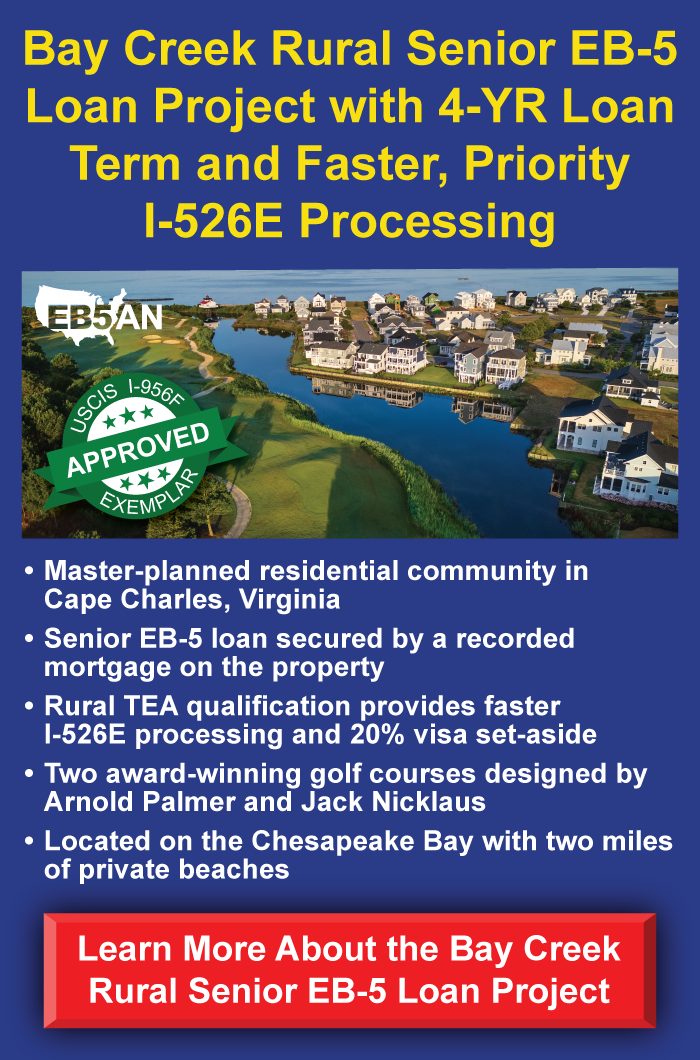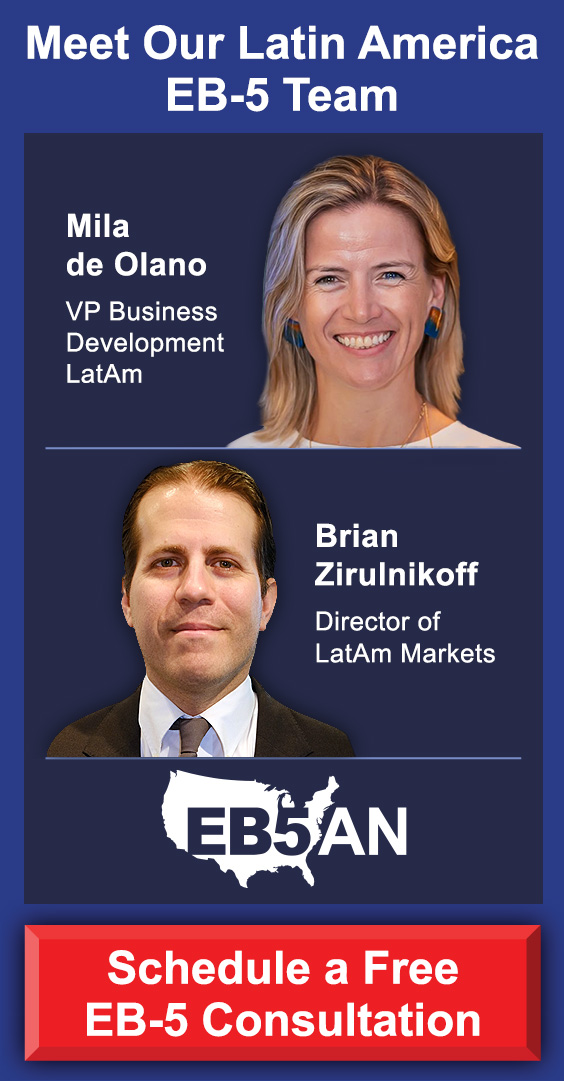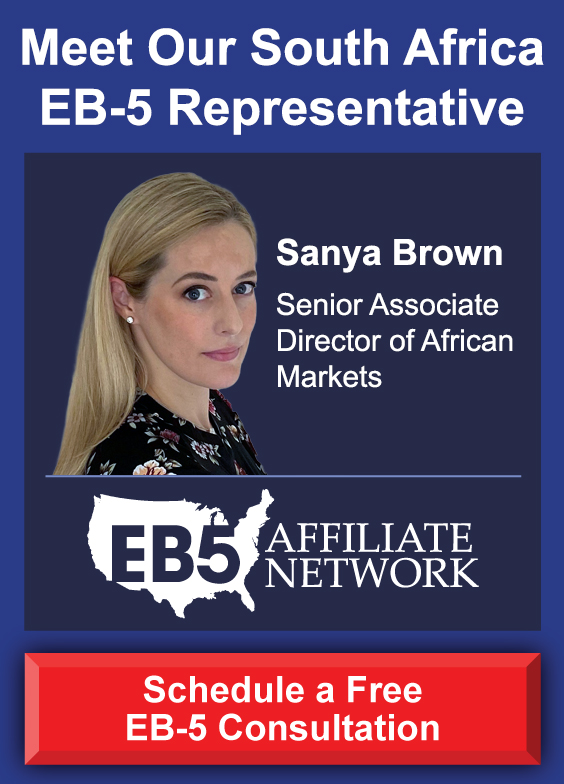Like most U.S. employment-based visas, the EB-5 visa allows investors to include their dependent family members on their immigrant visa application.
The EB-5 investor starts the process by making an investment in a qualifying EB-5 project, after which they’ll file a Form I-526E. Once their I-526E petition is approved, they and their dependent family members can apply for immigrant visas via consular processing or adjustment of status.
The immigrant visa petitions of EB-5 derivative beneficiaries are typically processed alongside those of the principal investor. Once their application is approved, they’ll receive conditional Green Cards valid for two years. At the end of the two years, they can file a Form I-829 to remove their Green Card conditions and obtain unconditional permanent resident status.
Although the EB-5 process is quite straightforward for EB-5 derivative beneficiaries, certain occurrences can jeopardize a person’s lawful derivative status. We’ll discuss some of these factors in this article.
What Is an EB-5 Derivative Status?
Factors That Can Jeopardize Your Legal Status as a Derivative Beneficiary
- Aging Out of Eligibility
- Death of Principal Applicant
- Abandonment of Status by Principal Applicant
- Failure to Create the Required Jobs
- Marriage
- Divorce
Safeguard Your EB-5 Derivative Status
What Is an EB-5 Derivative Status?
The term “derivative beneficiary” in immigration refers to persons who receive their immigrant status based on the petition of a principal applicant, or the person who submitted the primary petition. Thus, anyone included in an EB-5 petition other than the principal investor has a derivative status because their status depends on the main applicant’s investment.
Under the program, only spouses and unmarried children below 21 qualify as derivative beneficiaries. Unmarried partners, civil partners, unmarried children above 21, and married children below 21, as well as any other family members, such as parents, do not qualify as EB-5 dependents.
Factors That Can Jeopardize Your Legal Status as a Derivative Beneficiary
Persons eligible as EB-5 derivatives at the time of the I-526E filing can sometimes lose their eligibility during the broader EB-5 process. Below are some of the main factors that can cause this to happen.
Aging Out of Eligibility
The age limit for investors’ children to qualify as derivative beneficiaries is 21. This means you must be below 21 years old at the time of the principal applicant’s I-526E filing to be eligible for derivative status as an investor’s child.
However, because of processing delays especially under the legacy “unreserved” category, many investors’ children turn 21 before the petition is processed, essentially aging out of eligibility. For example, if you were 20 years and one month old at the time of the I-526E filing and the petition was approved 15 months later, you would be over 21 years old and no longer eligible for an immigrant visa as a derivative beneficiary.
In 2002, Congress introduced the Child Status Protection Act (CSPA) to address this challenge. CSPA allows your age to be frozen until the I-526E is approved. So, in the case of the example above, the 15-month adjudication delay would be subtracted from your current age, making your age 20 years and one month in the eyes of immigration authorities.
However, you must meet the “sought to acquire” requirement to maintain your eligibility. This means you must apply for an immigrant visa within one year of receiving I-526E approval. Critically, this will not be possible if your country is subject to visa retrogression and cut-off dates. As a result, CSPA may not be able to protect your derivative status in the case of visa retrogression.
There are currently no backlogs in the set-aside visa category for all nationalities. However, in a recent Visa Bulletin, USCIS predicts a backlog will occur within the fiscal year. And applicants from high-demand countries like China and India will be most affected. Investors from either country who are already in the U.S. therefore have limited time to concurrently file for adjustment of status, employment authorization, and advance parole—or else those under 21 risk aging out.
Death of Principal Applicant
Your EB-5 derivative status depends on the principal investor’s legal status. If your principal applicant dies during the process, it may jeopardize your derivative status, depending on your stage in the EB-5 process.
You will likely lose your derivative status if the principal investor dies before obtaining I-526E approval. In such a case, you may have to withdraw and refile the petition.
If the principal applicant dies after receiving I-526E approval but before you receive conditional residency, you may still receive your conditional Green Card. However, it’s best to consult with your immigration attorney immediately to assess your options.
If your primary applicant passes away after you’ve received your conditional Green Card, your legal status will not be affected. You can still file Form I-829 to remove your Green Card conditions and become a permanent resident.
Abandonment of Status by Principal Applicant
If your principal investor abandons their legal immigrant status during the two years of conditional residence before receiving Form I-829 approval, you and any other derivative beneficiary may not be able to remove your Green Card conditions. You’ll also lose your legal derivative status.
However, once Form I-829 is approved and you obtain legal permanent resident status, your status becomes independent of the primary applicant. In other words, you won’t lose your legal status even if the principal investor abandons theirs.
Failure to Create the Required Jobs
One of the key conditions for receiving an EB-5 Green Card is job creation. Each investment must create at least 10 full-time jobs for U.S. workers.
If the investment fails to create the required jobs due to project delays or failure, the principal investors and their derivative beneficiaries risk losing their legal status. The principal investor may also lose their investment.
In the case of project failure, the investor may be able to redeploy their investment to another qualifying project. If the redeployment is successful, the investor and their derivative beneficiaries will be able to maintain their legal status, provided the new project creates the required job within the stipulated time frame.
Conducting thorough due diligence is crucial before choosing an EB-5 project to avoid such a situation. As a derivative beneficiary, you should also be involved in this process. Assess the regional center and the developer’s reputation and carefully review the project’s financial records and job creation.
Marriage
Dependent children of EB-5 investors qualify as derivative beneficiaries so long as they’re below 21 and unmarried. If you have a derivative status based on your parent’s EB-5 investment, you must remain unmarried throughout the adjudication process.
You will lose your derivative status if you get married before receiving your conditional Green Card. Unless you’re willing to forego U.S. residency or can afford to file independently as a principal investor, it’s best to wait until you receive your conditional Green Card before getting married.
Divorce
Spouses of EB-5 investors qualify as dependents so long as they remain married throughout the adjudication process. You will lose your derivative status if you get a divorce before obtaining Form I-485 or DS-260 approval. To safeguard your EB-5 derivative status, waiting to receive your conditional Green Card before filing for a divorce is best.
Conversely, divorcing after receiving your conditional Green Card will not affect your status. You can still file Form I-829 for removal of your Green Card conditions to become a permanent resident.
Safeguard Your EB-5 Derivative Status
While the responsibility for making the EB-5 investment and maintaining eligibility falls primarily on the principal investor, you can still play a role in protecting your derivative status. Staying involved in the due diligence process and being mindful of key life events—like marriage or aging out—can help safeguard your path to permanent residency.
If your family is still considering applying for an EB-5 visa, you must start the process quickly to avoid complications like visa retrogression, particularly if you’re from a high-demand country. EB5AN can help you with this.
With over 10 years of experience, EB5AN has helped over 2,300 families from 70+ nationalities obtain U.S. permanent resident status. We offer our clients first-rate, low-risk regional center projects with a 100% USCIS approval rate to date.
You can schedule a free one-on-one call with our EB-5 experts today to learn how to start the EB-5 process.









